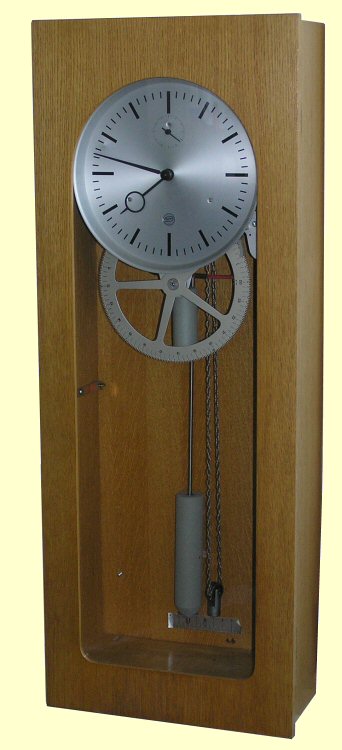These clocks are utilitarian German manufactured clocks, typical of the sort made for service in factories and schools. The oak finished chipboard veneer case is fairly unique, and also very useful, in so much that it can be lifted away.
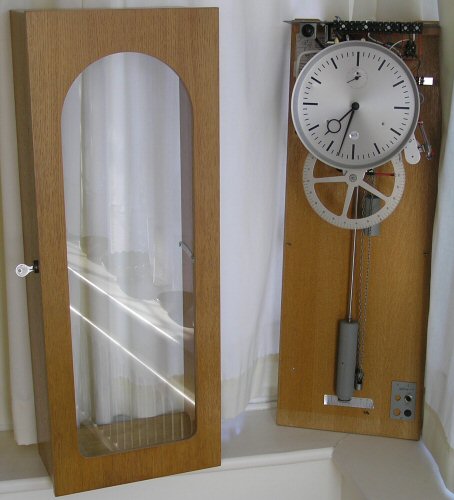
This is achieved by raising the two levers inside (see photo below) which allows the sides and top of the case to be lifted away, leaving the backboard with its attached clock movement in situ.
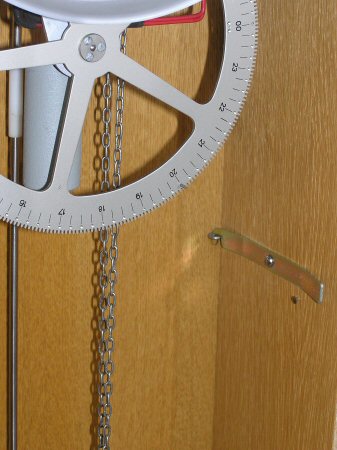
The clocks dimensions are 33 inches high. 11.5 inches wide, 6.75 inches deep. The modern looking dial face is 9 inches diameter.
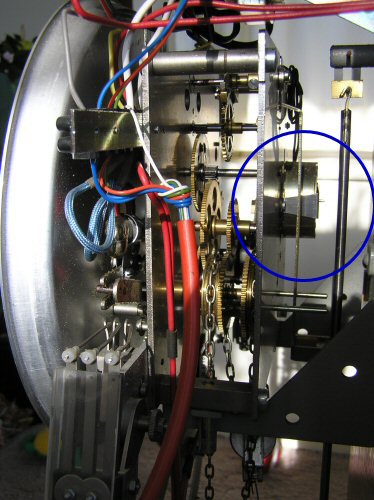
The clock has substantial plates and is built to last.
The well made 3/4 second movement is powered by a falling weight which is continually rewound by a small Synchronous motor (circled in blue). The great advantage of these types of clock are that they are relatively free of the usual thump or clunk that you get from a gravity arm type of master clock. This makes them ideally suited for inside the house, as they have just the usual 'tick-tock' that people have come to expect of a conventional clock. The only sound you normally hear is the click of the mercury switch being operated once every 15 minutes.It also has a conventional contact set that also gives an output every 15 minutes. The duration of both of these pulses can be altered by sliding either of the two levers that can be found behind the dial.
Various output options were available from the manufacturer and this particular clock has no output to drive slave dials, its purpose being solely that of a programmer. Some had an additional pair of mercury switches to output a reversing one minute pulse for use with a slave.
In addition to the 15 minute contacts mentioned above these clocks also have a 7.5 inch diameter program dial that can be used to switch on bells or sound a hooter at certain times. The actual timing of the events being determined by small pegs which the operator screws into the periphery of the programme wheel as can be seen in the photograph.
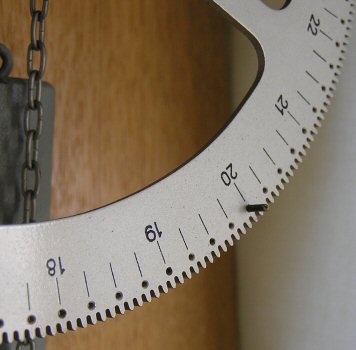
The clocks will run for around ten hours in the event of a power cut and at the end of this period the weight will have dropped all the way to the bottom of the case. Under normal use they rewind once a minute for around 5 or 6 seconds, but this is so quiet you do not notice unless you have the door open and listen specifically for it.
Should the weight need rewinding from the bottom of the case after a ten hour or longer power cut, it will take just over an hour (70 mins) as the motor's progress is very slow!
The pendulum rods may be made from a metal called Invar for temperature compensation, although I am unable to determine if this is the case. The cast iron bob has the usual rating nut at the bottom.
Being a boring old traditionalist I do not like to see plastic used in a clock, however the clever little plastic sleeve that fits around the pendulum rod where the crutch makes contact (see photo below) is a very simple yet effective method of getting the clock 'in beat'.
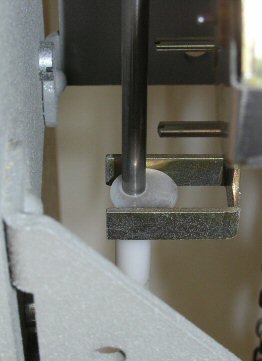
This is achieved by having the top of the sleeve made into a cam shape. By simply twisting the sleeve either way on the rod it will alter the position of the crutch relative to the pendulum's rod, allowing the correct beat to be obtained.
The pendulum has its own storage compartment on the left hand side of the case, being held in place during transit by a screw that goes through the back of the case into a threaded hole in the back of the pendulum bob.


